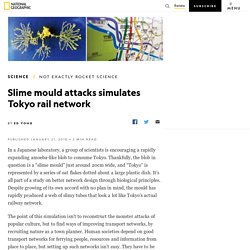

Cahier de laboratoire BLOB ALHPA Charlotte MATHON .pdf. Science_participative_ElevetonBlob_Audrey_Dussutour. Croissance du Blob. ELEVETONBLOB - Simplifica tu vida. Comment faire un TIMELAPSE ? DOC3 photo video timelapse blob frederic lieppe. Tutoriel Données EleveTonBlob. Dimensions personnalisées 59. cm. Affiche .4 сm. Affiche .4 сm(1) BLOB (Physarum polycephalum) – Zanndoli. Cette page va continuer à évoluer car je continue mes recherches personnelles dessus.

Si vous souhaitez avoir des informations sur le blob je vous renvoie sur la fiche Wikipédia où vous allez voir la conférence de Audrey Dussutour, elle explique bien le travail qu’elle a réalisé dessus. J’ai repris son travail pour pouvoir répondre à ma question. Un Blob en Classe: - Bien en classe! Pédagogie positive - Ressources cycle 2, cycle 3.
Cookies POWr.io Ces cookies enregistrent des données statistiques anonymes sur le comportement du visiteur sur ce site Web et ont pour but de garantir le fonctionnement de certains widgets présents sur ce site.

Ils sont uniquement utilisés à des fins d'analyse interne par l'opérateur du site, par ex. : pour le nombre de visiteurs, etc. 2021 102 protocole blob cnrs elevetonblob experience educative cnes. 2021 097 activites pedagogiques alpha 24 03. FT mesurim2.
#élèvetonblob. Brainless Slime Mold Builds a Replica Tokyo Subway. When scientists talk up learning about transportation networks from nature, it’s often ants that get the praise for being so much more organized and efficient than we humans with our silly gridlock.

But a team of Japanese researchers found, for a new studyin Science, that you don’t even need a brain to be to a traffic genius. Single-celled slime molds, they found, can build networks as complex as the Tokyo subway system. The yellow slime mold Physarum polycephalum grows as a single cell that is big enough to be seen with the naked eye. When it encounters numerous food sources separated in space, the slime mold cell surrounds the food and creates tunnels to distribute the nutrients [Science News]. To test how efficient the mold could be, Toshiyuki Nakagaki’s team duplicated the layout of the area around Tokyo: They placed the slime mold in the position of the city, and dispersed bits of oat around the “map” in the locations of 36 surrounding towns.
Can Slime Mould Solve Mazes? Slime mould attacks simulates Tokyo rail network. In a Japanese laboratory, a group of scientists is encouraging a rapidly expanding amoeba-like blob to consume Tokyo.

Thankfully, the blob in question is a “slime mould” just around 20cm wide, and “Tokyo” is represented by a series of oat flakes dotted about a large plastic dish. It’s all part of a study on better network design through biological principles. Despite growing of its own accord with no plan in mind, the mould has rapidly produced a web of slimy tubes that look a lot like Tokyo’s actual railway network.